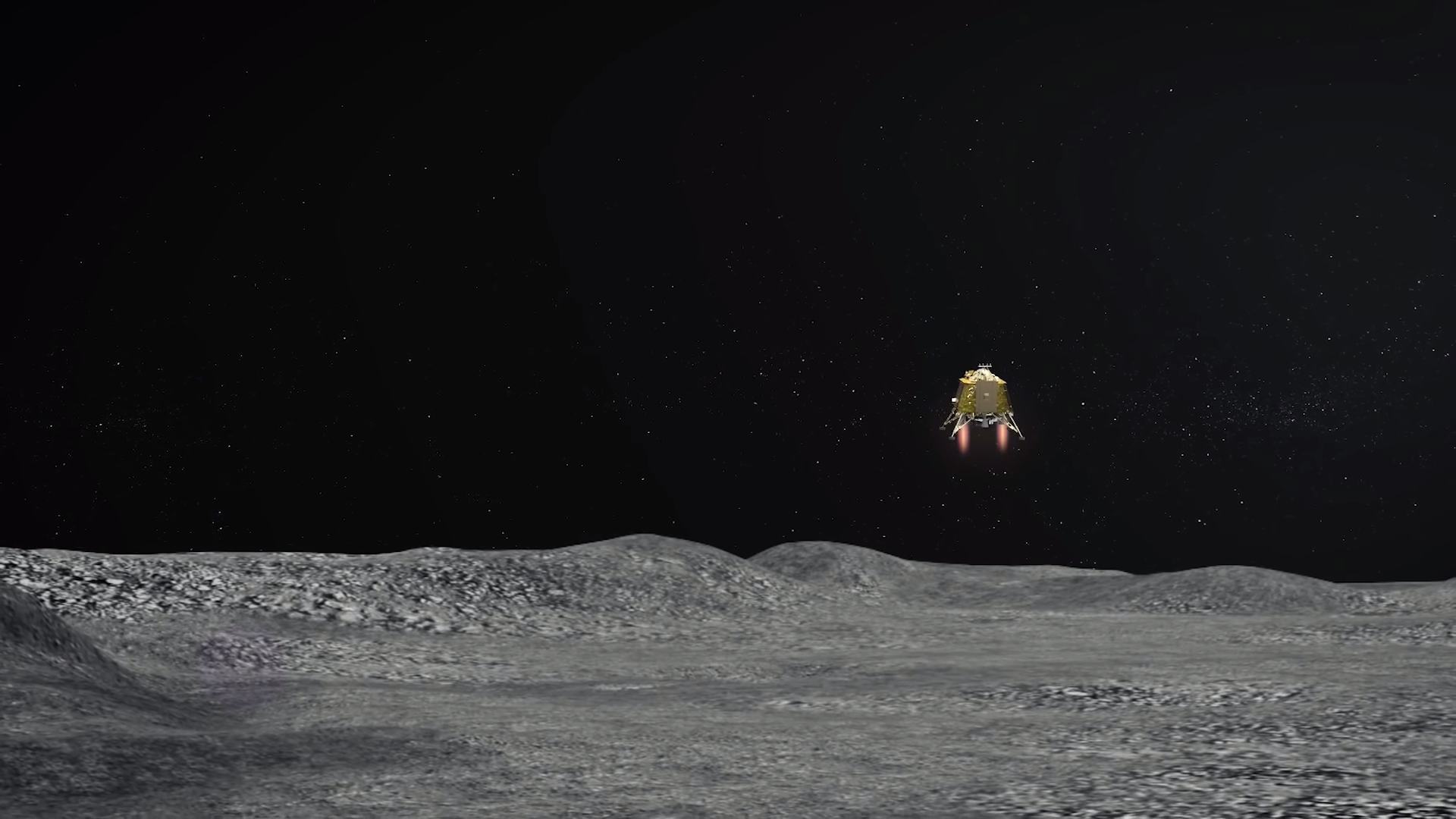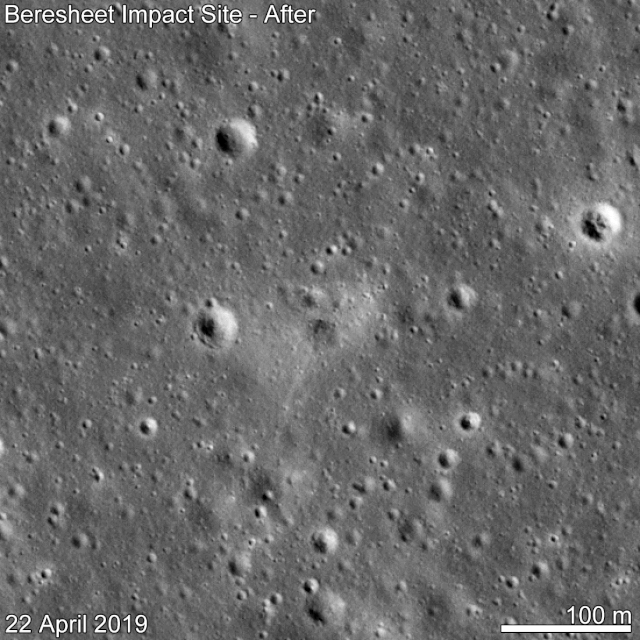
We could learn more about the fate of India's first moon lander soon.
On Sept. 6, the Chandrayaan-2 mission's Vikram lander descended toward the lunar surface, targeting a site near the south pole. But mission controllers lost contact with Vikram when the craft was just 1.3 miles (2.1 kilometers) above the gray dirt, and the lander has been silent ever since.
The Chandrayaan-2 orbiter has spotted Vikram from above, and mission controllers continue to try establishing communications with the craft, Indian Space Research Organisation (ISRO) officials announced last week. But updates have been few and far between, and ISRO has not yet published any photos of Vikram on the lunar surface.
Related: India's Chandrayaan-2 Mission to the Moon in Photos
We may get some imagery from another eye in the lunar sky, however. NASA's Lunar Reconnaissance Orbiter (LRO) is scheduled to fly over Vikram's landing site tomorrow (Sept. 17), officials with the U.S. space agency said, and the probe's observations will likely make it out into the wider world in short order.
"Per NASA policy, all LRO data are publicly available," NASA officials said in a statement emailed to Space.com. "NASA will share any before and after flyover imagery of the area around the targeted Chandrayaan-2 Vikram lander landing site to support analysis by the Indian Space Research Organization."
LRO, which launched in 2009, has a history of photographing spacecraft on the lunar surface. The orbiter has repeatedly imaged NASA's Apollo landing sites, for example, and it has spied both of China's moon rovers (Yutu and Yutu-2). LRO also found the final resting place of Israel's Beresheet lander, which crashed during its epic touchdown attempt this past April.
Get the Space.com Newsletter
Breaking space news, the latest updates on rocket launches, skywatching events and more!

To date, only three nations have succeeded in landing a probe softly on the moon: the Soviet Union, the United States and China. India just joined Israel in the near-miss camp — unless the Chandrayaan-2 team can re-establish contact with Vikram, which also toted a rover named Pragyan.
(Beresheet's landing would have been historic for another reason as well: The craft was built and operated by a privately funded team, not the Israeli government. All moon landings to date have been pulled off by government space agencies.)
The Chandrayaan-2 orbiter is still going strong, using eight science instruments to map the lunar surface in detail, assess the moon's stores of water ice, and perform a variety of other tasks. The spacecraft is expected to continue this work for at least seven more years, ISRO officials have said.
- India's Space Program: Complete Coverage
- Amazing Moon Photos from NASA's Lunar Reconnaissance Orbiter
- Stunning Photos Show Earth from India's Spacecraft Headed to the Moon
Mike Wall's book about the search for alien life, "Out There" (Grand Central Publishing, 2018; illustrated by Karl Tate), is out now. Follow him on Twitter @michaeldwall. Follow us on Twitter @Spacedotcom or Facebook.
Join our Space Forums to keep talking space on the latest missions, night sky and more! And if you have a news tip, correction or comment, let us know at: community@space.com.

Michael Wall is a Senior Space Writer with Space.com and joined the team in 2010. He primarily covers exoplanets, spaceflight and military space, but has been known to dabble in the space art beat. His book about the search for alien life, "Out There," was published on Nov. 13, 2018. Before becoming a science writer, Michael worked as a herpetologist and wildlife biologist. He has a Ph.D. in evolutionary biology from the University of Sydney, Australia, a bachelor's degree from the University of Arizona, and a graduate certificate in science writing from the University of California, Santa Cruz. To find out what his latest project is, you can follow Michael on Twitter.









